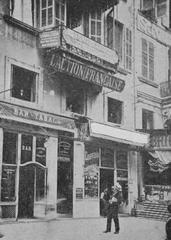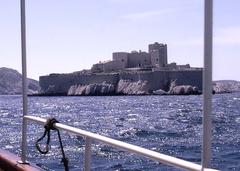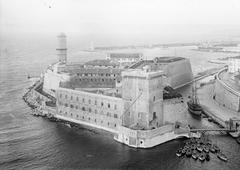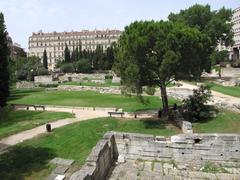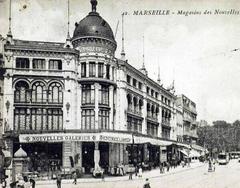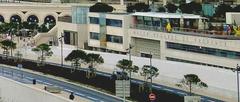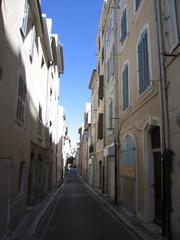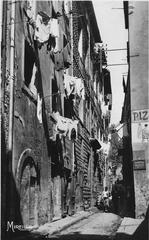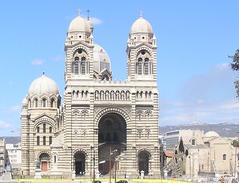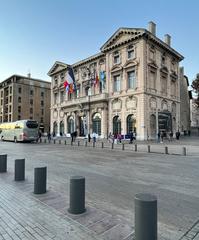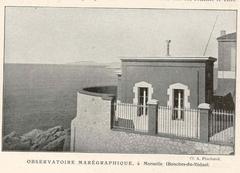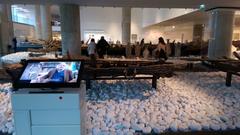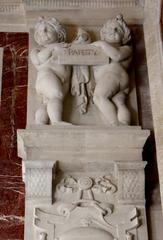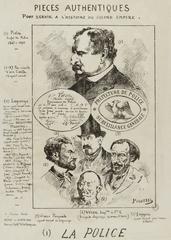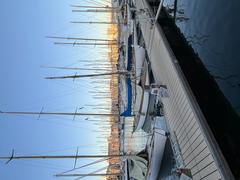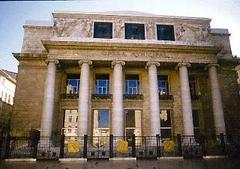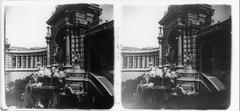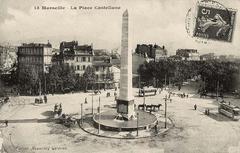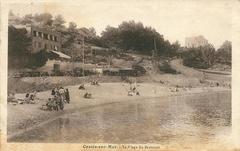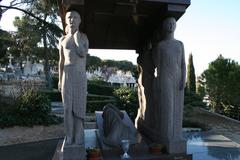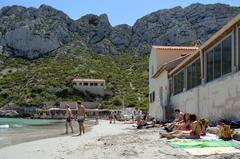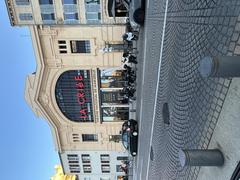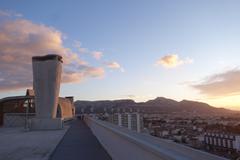
Saint-Loup Marseille Visiting Hours, Tickets, and Historical Site Guide
Date: 04/07/2025
Introduction to Saint-Loup, Marseille
Located in the dynamic 10th arrondissement, Saint-Loup is a neighborhood that beautifully encapsulates Marseille’s layered history, multicultural vibrancy, and ongoing urban transformation. As Marseille, one of Europe’s oldest cities, continues to evolve, Saint-Loup stands as a testament to the city’s ability to blend historical depth with modern development. From ancient Greek origins and monastic vineyards to a thriving, diverse community shaped by 19th and 20th-century industrialization, Saint-Loup is both a living archive and a modern hub (marseilletourisme.fr, marseillecityofculture.eu).
Today, urban renewal initiatives—such as the T3 tram line expansion and the development of green boulevards—are enhancing Saint-Loup’s connectivity, sustainability, and community life. These projects not only improve accessibility for residents and visitors but also foster economic activity and urban vitality (madeinmarseille.net, investropa.com).
Saint-Loup beckons travelers who wish to experience Marseille beyond the typical tourist hotspots. Its unique mix of historical landmarks such as Église Saint-Loup, bustling markets, inviting parks, and proximity to natural wonders like the Calanques National Park make it a rewarding destination for cultural exploration and leisure (Nomadic Matt, overyourplace.com).
This guide provides an in-depth look at Saint-Loup, including its historical development, main attractions, practical travel tips, transportation options, safety guidelines, and recommendations for dining and accommodations. Whether you’re a history enthusiast, a culture lover, or a casual visitor, you’ll find everything you need to fully embrace the spirit of Saint-Loup and enjoy a memorable experience in Marseille (marseille-tourisme.com).
Table of Contents
- Introduction
- Historical Evolution of Saint-Loup
- Urban Development and Renewal
- Attractions and Visitor Information
- Practical Tips for Visitors
- Visuals and Media Suggestions
- Frequently Asked Questions (FAQ)
- Summary Table: Key Facts
- Sources
Historical Evolution of Saint-Loup
Ancient and Medieval Roots
Saint-Loup’s origins trace back to the era of Massalia, founded by Greek settlers around 600 BCE (marseilletourisme.fr). Initially a rural outpost, Saint-Loup was characterized by agricultural estates, hamlets, and monastic vineyards. Roman infrastructure, including roads and aqueducts, gradually integrated this periphery with the urban core. Through the Middle Ages, monastic influence remained strong, and the neighborhood likely derived its name from a chapel dedicated to Saint Lupus.
From Village to Suburb: 19th–20th Centuries
The 19th century marked a pivotal transformation as Marseille’s industrialization swept through its outskirts. Saint-Loup shifted from a rural village to a working-class suburb, with new housing, factories, and improved transport links integrating it more fully into city life (marseillecityofculture.eu). The area’s architecture evolved, reflecting its new role as a hub for port and manufacturing workers.
Post-War Expansion and Modern Challenges
The post-World War II era saw Saint-Loup expand further with the construction of large housing estates and public amenities in the 1950s and 1960s. The neighborhood became a tapestry of diverse cultures—North African, Italian, and Mediterranean—cemented by vibrant markets, eateries, and local festivals (marseillecityofculture.eu).
Urban Development and Regeneration
Strategic Renewal Projects
Saint-Loup is central to Marseille’s urban regeneration strategies. Key initiatives include:
- T3 Tram Line Expansion: The T3 connects Saint-Loup to the city center and is set for further southern extension by 2025, enhancing access and convenience (madeinmarseille.net).
- Boulevard Arboré and Cap Pinède – Capitaine Gèze Axis: Revamping major thoroughfares with green spaces and commercial developments (investropa.com).
- Community Facilities: New schools and centers foster social cohesion and local services.
Real Estate and Sustainability
Saint-Loup’s improved transport and green initiatives are attracting residential and commercial investment, while projects like the “Boulevard Urbain Vert” and the Vallon des Hautes Douces urban agri-food hub emphasize sustainability and local food systems (madeinmarseille.net).
Attractions and Visitor Information
Major Sights and Experiences
Église Saint-Loup
- Address: 71 Boulevard de Saint-Loup
- Hours: Open daily, 9:00 AM–6:00 PM; Mass at 10:00 AM Sundays, 6:30 PM weekdays (horairedemesse.fr)
- Admission: Free
- Accessibility: Facilities for visitors with reduced mobility
Local Markets
- When: Tuesdays, Thursdays, Saturdays, 7:00 AM–1:00 PM
- What: Fresh produce, cheeses, olives, artisanal goods
- Admission: Free (France Rent)
Green Spaces
- Parc de la Maison Blanche and Parc de Saint-Cyr: Open dawn to dusk, ideal for walking, picnics, and family outings
Proximity to Marseille’s Top Sites
- Vieux-Port: 20-minute bus ride; seafood markets and cafés (PlanetWare)
- Le Panier: Colorful artisan quarter
- Basilique Notre-Dame de la Garde: Open 7:00 AM–7:00 PM
- MuCEM: Modern museum, ticketed (MuCEM Official Site)
- Calanques National Park: Short bus or car ride from Saint-Loup
Guided Tours and Photographic Spots
While dedicated tours of Saint-Loup are rare, broader Marseille city tours may include stops here. Photographers will enjoy colorful street scenes, lively markets, and riverside views—especially around the Huveaune River and local parks.
Practical Tips for Visitors
Getting There
- Metro: Line 2 (Red) to Sainte-Marguerite Dromel, then local buses
- Bus: RTM lines connect Saint-Loup with central Marseille (Nomads Travel Guide)
- Car: Access via A50 motorway; street parking and public lots available
Accommodation
Options range from boutique hotels and guesthouses in the 10th arrondissement to local bed-and-breakfasts. Consider apartments for a more authentic experience (My Guide Marseille).
Dining
Enjoy Provençal specialties at family-run bistros and cafés: ratatouille, tapenade, bouillabaisse, and “navettes” biscuits (Travel4Real).
Safety and Etiquette
Saint-Loup is generally safe; use standard urban precautions. Greet locals with basic French phrases and dress modestly in religious settings (lonelyplanet.com).
Facilities and Accessibility
Most public spaces are accessible, though some older streets may be uneven. Pharmacies, supermarkets, and ATMs are readily available. For official information, visit the main tourist office.
Events and Festivals
Citywide celebrations include Fête de la Musique (June 21), Heritage Days (September), and Christmas markets (December). Check parish or community boards for local events (My Guide Marseille).
Visuals and Media Suggestions
Alt tags: “Église Saint-Loup visiting Saint-Loup”, “Parc du 26e Centenaire Marseille green space”
Interactive maps and virtual tours are available via Marseille’s tourism websites.
Frequently Asked Questions (FAQ)
Q: What are the visiting hours for Église Saint-Loup?
A: Open daily, 9:00 AM–6:00 PM. Mass at 10:00 AM Sundays, 6:30 PM weekdays (horairedemesse.fr).
Q: Are there entrance fees for Saint-Loup attractions?
A: The church and markets are free; museums like MuCEM require tickets.
Q: How do I reach Saint-Loup from the city center?
A: Metro Line 2 to Sainte-Marguerite Dromel, then RTM bus.
Q: Is Saint-Loup family-friendly?
A: Yes, with parks, markets, and community events.
Q: Are guided tours available?
A: While not specific to Saint-Loup, some city tours include this district.
Summary Table: Key Facts about Saint-Loup
| Feature | Details |
|---|---|
| Location | 10th arrondissement, southeast Marseille |
| Administrative Sector | 5th sector (with 9th arrondissement) |
| Main Thoroughfare | Avenue de Saint-Loup |
| Public Transport | RTM bus lines, Metro Line 2, T3 tramway |
| Notable Green Spaces | Parc du 26e Centenaire, Huveaune River, nearby Calanques |
| Population Profile | Diverse, family-oriented, multicultural |
| Urban Character | Village-like, residential, local commerce, community facilities |
| Accessibility | Good road links (A50), public transport, pedestrian-friendly |
Summary and Visitor Recommendations
Saint-Loup is a vibrant blend of Marseille’s historical legacy and modern urban life. Ongoing regeneration, rich cultural traditions, and easy access to both city and nature make it an ideal destination for travelers seeking authenticity. Explore local markets, parks, and architectural landmarks, enjoy Provençal cuisine, and participate in community events for a genuine Marseille experience.
For the latest event listings and travel tips, download the Audiala app and follow us on social media. For official information, consult local tourism offices and parish resources.
Sources
- marseilletourisme.fr
- marseillecityofculture.eu
- investropa.com
- madeinmarseille.net
- Nomadic Matt
- overyourplace.com
- marseille-tourisme.com
- Nomads Travel Guide
- France Rent
- PlanetWare
- My Guide Marseille
- Travel4Real
- horairedemesse.fr

